Yet again, it’s Monday. This weekend was filled with both gadgets and non-gadgetry things alike, so go forth and enjoy!
1) The Eiffel Tower: To The Top
Fun fact: Since moving here over 5 years ago, we’ve yet to go to the top of the Eiffel Tower. Sure, we’ve escorted friends to the Eiffel Tower, and certainly I ride/run/whatever around/past it multiple times per week. And we often picnic on the grounds of it.
But go to the very top? Not so much.
The last time I did so was about 15 years ago, on a trip long ago. And The Girl? Never before.
So Friday we took advantage of tourist season being over, while still having some nice weather to head up the top. The lack of others meant our journey was incredibly quick. Virtually no lines at all for the two-elevator ride.
Before we knew it, we were 276 meters (or 906 feet) high on the top viewing deck and looking over the city.
I had The Peanut strapped to me, and she enjoyed things for the first bit:
And then she fell asleep. Apparently a nap was the higher priority for her.
You can see the Eiffel Tower from just about anywhere in Paris, assuming a building isn’t blocking your view. And the inverse is true too – you can see just about anywhere in Paris. The view really is spectacular:
And thus checking off our list the most notable tourist thing to do in Paris. Watch out, we might even go to the Louvre together some day.
2) Unboxing goodness:
After getting back from the Eiffel Tower (and a side-trip to the farm for some pumpkins), I got cooking on some unboxing things. Most notable was the RunScribe Plus. My unit arrived at my US forwarding back a bit earlier in the week, and then I quickly forwarded it over (along with a pile of other things):
Inside are two pods (left and right shoe), which in turn can give you all sorts of metrics that I’ll discuss later in this post. In the box though are also clips that allow you to install it on either the back of your shoe, or the front of your shoe.
Simple and straighforward, and largely like their existing pods. Plus, I really do like their little pod charger. It’s like a nice tidy coffin for your pods.
From there I got things charged up, and then spent two hours trying to get three other watches and sensors all situated for my run. The amount of time I lose daily to getting things on the right firmware, charging, prepping, etc… would astound people.
3) An Evening Louvre Run
After sorting out all my firmware and related woes, I headed out for a run around town. It was a beautiful Friday night while The Girl was working away on Halloween themed cakes for a friend’s party. Oh, here’s The Girl:
So I aimed for about a 45-55 minute run that would swing through the Louvre and then eventually back along the river. Nothing fancy. Here, I found the Louvre:
Of course, my main goal was gathering data. Here was my device list:
Apple Watch Series 3: Connected via Stryd Apple Watch App
Garmin Vivoactive 3: Connected to RunScribe Plus & Stryd
Garmin FR935: Connected to RunScribe Plus & Garmin RD-POD for Running Power & Wahoo TICKR X
GoPro Hero6 Black: Pictures, obviously.
Arion insole sensors: To collect running data, connected to iPhone 7
Milestone Pod: Just another running footpod
Got all that? Good.
Of course, as with all things, the best laid plans didn’t quite work. After resetting my firmware on my FR935 I forgot to re-pair it to my RD-POD till about 5-7 minutes into the run. At which point I re-remembered that you can’t access the sensor settings without stopping the run. So I just skipped that.
Also, the Arion app stopped recording or something half-way through the run. But most other things worked.
I got RunScribe Plus data, though I had to wait for some fixes to calibration today to make sense of the data. So I’ll have to try again in the following days. Either way, I’m impressed by the initiative and involvement the company is taking to rectify any early stumbles. I think the company has likely finally arrived at the product they wanted all these years, so I’m pretty sure it’ll do well. Oh, and here, you can look at my full run data here. The dip in the graphs below is where I stopped to take the Louvre photo.
Or, the same data as captured via Garmin Connect IQ on the FR935 here (Note: Due to the calibration piece I mentioned, the data on the RunScribe site is corrected, whereas the data on CIQ isn’t. That’s fixed as of today, going forward.) And, the Vivoactive 3 CIQ with Stryd here.
The Stryd to the Apple Watch did seemingly work well, though I’m still not super-convinced there’s a huge cross-over between those two markets at the current Stryd prices. There’s a bit more detailed write-up on what that looks like here. But right now it’s super basic.
On the bright side, I did manage to take this nifty photo:
Oh, did I mention the Arion pods light-up at night? Yes, two glowing beacons of light attached to my shoes. Just in case folks watching me didn’t think I was crazy already.
4) Friday Night DCR Live Stream!
After I wrapped up my run above on Friday night, The Girl was (literally) still cooking along. So I did a quick YouTube Live Stream. Historically I’ve used Facebook Live for this, but I decided to mix things up a bit. In theory those on YouTube that subscribe to me there got instant notifications. Also, I tweeted it out. But basically, you should subscribe to me on YouTube anyway, because it’ll increase your awesomeness factor. Just go here, and tap the subscribe button.
Oh, and for those that missed it, here’s the full video from it:

I hope to do it again more frequently. Which is usually what I say every time I finish a live stream.
5) Food Trucks and Art:
Sunday afternoon we headed out for a wander across town. There was a big art exhibition of sorts going on in the gardens near the Louvre and then up to the Champs-Élysées, as well as other well-known museums/halls. So we swung past some of that on the way there:
I always enjoy the art they put in the gardens for this event, as it’s usually quite ‘different’ than traditional statutes found there.
Along the way, it started pouring. And winding. Lots of wind. We sought shelter for a bit, but ultimately decided we needed to push through the rain and wind. After all: Food trucks awaited us.
They had two small clusters of 3-6 food trucks and carts each. Food trucks in Paris tend to be smaller than in the US. In one case, more like bike cart things. Still, they had a good collection of options.
We hit up 3 of them and shared different dishes to try as many things as possible.
Like these waffles. They were awesome. I now need a waffle recipe that makes sugary dough like this that can hold its form. All of our waffle ‘batter’ recipes are rather runny and not so awesome.
After eating too much, we decided to walk the 5K back home. That was somewhat our plan all along, but that was definitely our plan after the waffle and related things we ate. And with that…our weekend was complete (assuming you ignore the birthday/Halloween party, the pumpkin patch/farm trip, the late night ramen excursion, and chasing around the house a tiny human).
Hope everyone has a great week ahead!
FOUND THIS POST USEFUL? SUPPORT THE SITE!
Hopefully, you found this post useful. The website is really a labor of love, so please consider becoming a DC RAINMAKER Supporter. This gets you an ad-free experience, and access to our (mostly) bi-monthly behind-the-scenes video series of “Shed Talkin’”.
Support DCRainMaker - Shop on Amazon
Otherwise, perhaps consider using the below link if shopping on Amazon. As an Amazon Associate, I earn from qualifying purchases. It doesn’t cost you anything extra, but your purchases help support this website a lot. It could simply be buying toilet paper, or this pizza oven we use and love.

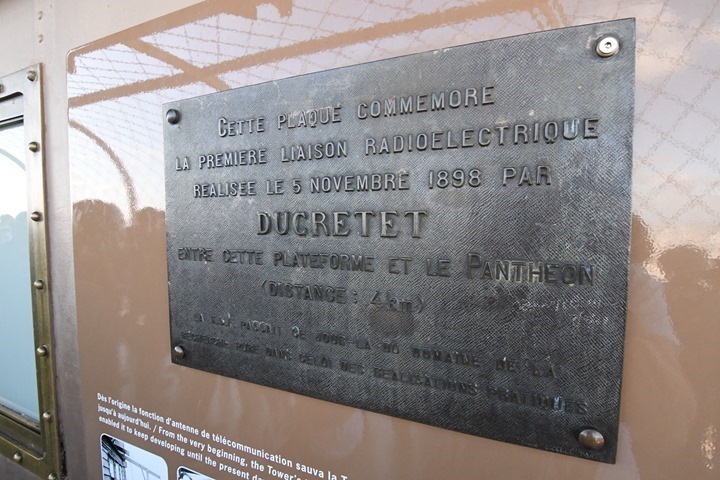





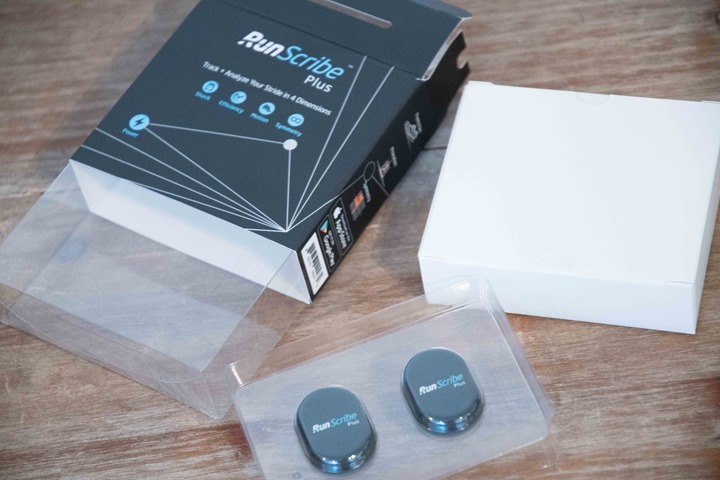
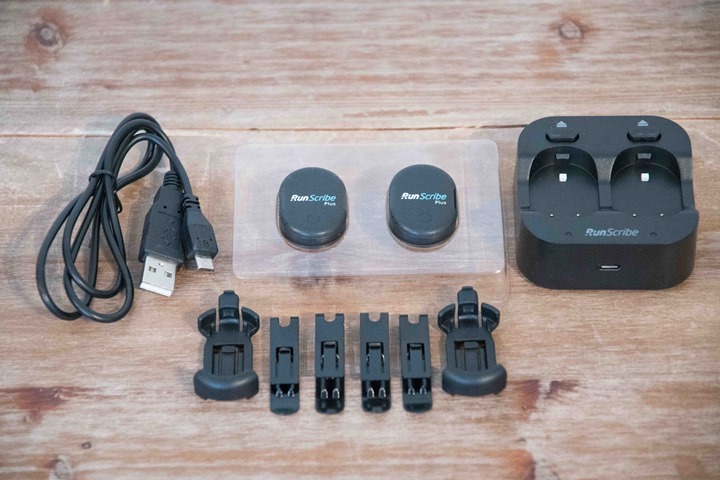
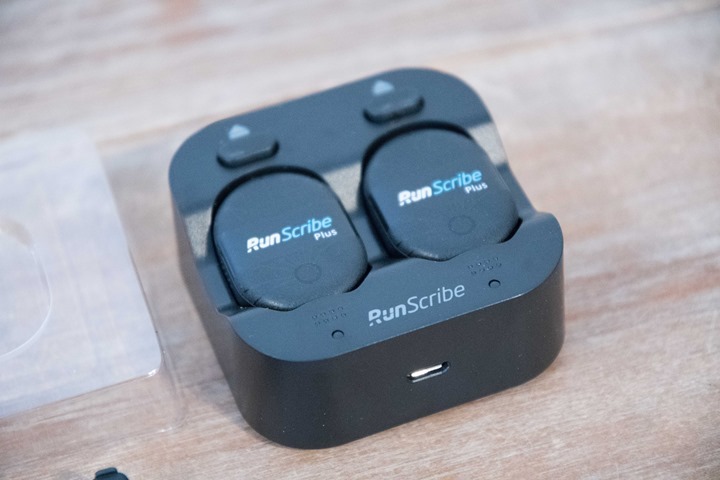


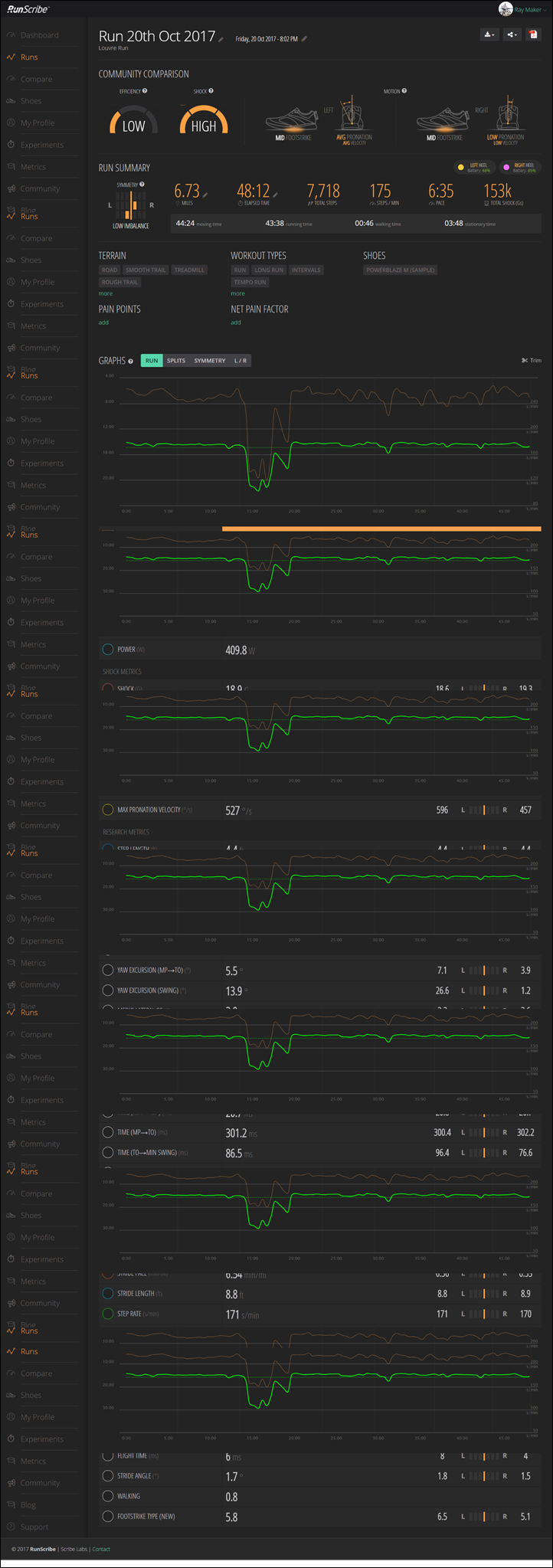
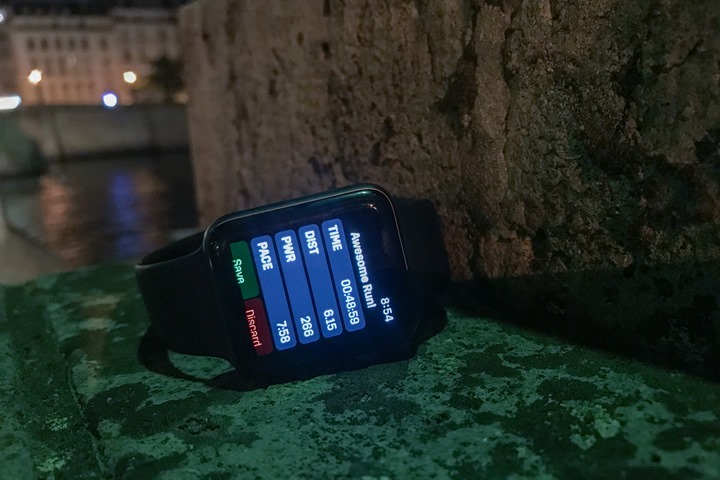






























Hi Ray, I think you’re looking for something like liege waffle. This style has little bits of sugar pearls and the dough is quite stiff. Cleanup is a hassle given the sugar but it’s worth it. link to smittenkitchen.com
Completely agree here. A liege waffle is exactly what these look like, and well worth making. Including the mess. Super yummy. The smitten kitchen recipe is a good one; I actually use this one:
link to goo.gl
I can confirm this.
They sell these all over here in belgium (the fact that Liège is in belgium might help :)) and the only problem I have with them is that they all disappear quit too quickly into my belly :)
ps: they also have a variation in which they cover one side with chocolate
Ray, every time you post a pictures of a Girl cooking or Peanut eating, I got hungry as well. After posting this comment at 23:03 I am going to visit the fridge to see what is inside….
To that Louvre running,
As I mentioned previously, and lot of you disagreed, now you can see, there is a correlation between ground contact time and Power…
And not much difference between Braking Gs and Impact Gs…
To Garmin developers,
Since this Connect software version 3.20.X was released, if I mark “Keep me signed in” it never ever does.
I was logged out, clicked to the link for that Louvre running and just viewing Ray’s activity logged me in???
The list of menu options on the left side is the evidence!
This is sick…
And the opposite happens for the ANT+Agent. After uploading activity, when disconnecting the ANT+, I always have to unmark “Automatically start Garmin ANT Agent the next time you log in”, because those settings never got applied…
“As I mentioned previously, and lot of you disagreed, now you can see, there is a correlation between ground contact time and Power…”
Really?
Sure, when you start walking instead of running then the GCT rockets and power nosedives, but if you look at the actual running periods in that activity, there are *lots* of points where the two move independently of one another.
No doubt there may well be a broad inverse correlation there, but there’s clearly a lot more at work and one is certainly not descriptive of the other.
Are you sure you can’t access and change sensor settings on your 935 mid run?? I’ve done it a few times (and just tested it again), and it seems to work fine. I’ve had to adjust hr sensors a few times mid run when experimenting with scosche, chest strap and inbuilt hr using the aux hr ciq field.
Brilliant to see you’ve got the runscribes installed… And totally agree with your comments about the approach Tim and the team are taking by working with the community to quickly evolve the product and software. Now if only my calf injury would heal, I’d be able to get going with mine!! Are you planning a ‘first look’, or heading straight into a full review?
I know I can connect to power meters mid ride. Even from a CIQ app by first holding the light button down to bring up the controls screen, then pressing the menu button and going to settings.
So it’s funny, I assumed/thought you could to it too, and was oddly surprised you couldn’t.
Sitting here (now on a different non-beta firmware), I can change it. I’m curious though and will go back and repro it. I was pretty much flabbergasted I couldn’t add/change it mid-run, since I do that quite often on the bike.
Hmm. Maybe an issue with the beta. I’m on the main release, have been meaning to install the beta, but have been too lazy.
Seeing more YouTube, FB vids. Is the DCR podcast officially dead? Seems like Ben was on the outs for awhile. I miss it!
Check out the video above. ;) I think around half-way through I chat about it.
Runscribe Plus or Runscribe Pro?
Just the the box you unboxed said Runscribe Plus
Mind your P’s & Q’s. Pro, Plus, Premium, Pow…close enough. ;)
Thanks, tweaked!
Hi Ray, I wasn’t aware of RunScribe Plus. I have been happily using Stryd hoping they release something like RunScribe. Any reason why we don’t have any in-depth reviews of RunScribe Plus yet?
Probably because Ray has just opened the box… And the software is being tweaked.
Headover to community.runscribe.com for the latest
Ginger nailed it. I just opened the box on Friday, and as he says, things are in a bit of state of ‘flux’ right now. Thus, I’m looking to let things settle over the next week or two (they’re moving incredibly quickly, with near daily or even more frequent updates). My goal timeframe for a more detailed post is mid-November, though, I will warn slightly that P2 (Baby 2) could impact things a bit.
#BitofaWorry
Cervelo did I P5 I seem to recall.
Definitely no P5. God no.
The 3T handlebars mounted on P5… link to cervelo.com
or link to 3tcycling.com
It’s me again… you may delete my comment if you do not like it… :-)
Something is wrong with the calories calculations there. I already mentioned to Garmin, that swimming calories calculations were always incorrect, even if the new HRM-Swim was applied and involved…
But let’s just focus on running, especially to that Ray’s Louvre running, comparing Strava and Garmin data.
Garmin data are origin from 935XT and Strava data from Vivoactive 3, however Ray’s age, weight, distance ran and the time are the same.
Strava is calculating 975 calories and Garmin 690 calories for the same activity (cca 30% difference).
How can we be sure that other heart rate based data, like VO2max, Power, are correctly calculated if there is such discrepancy in calories?
And I personally have issues with the units also:
1 kCal (kilocalories) = 1000 Cal (calories)
1 kJ (kilojoule) = 0,2348859 kCal
1 kCal = 4,1868 kJ
The average adult human basal metabolic rate is 2000 kCal.
Per Journal of Sport Science, for the HR based calories calculation at different activities the following formula is used, which units are in kCal:
Calorie Burned = [ (Age_In_Year x 0.2017) + (Weight_In_Kilogram x 0.1988) + (Heart_Beat_Per_Minute x 0.6309) – 55.0969] x Duration_In_Minute / 4.184
…and back to Garmin. They dumped the cooperation with Tanita, made their own scale and established a new cooperation with Under Armour for Calorie Goals within MyFitnessPal incorporated into Garmin Connect Profile/Dashboard…
But honestly, I would be curious, how many users are actually entering their daily calorie intake to that MyFitnessPal…
I bet, that nobody.
So the summary is, that based on zero input data, the calorie consumption is calculated, with questionable units and values…
Without having my Vivoactive 3 and FR935 side by side, I’d guess that my weights are different on them. Accounting for a portion of the calorie diffs between those two units (60 calories).
As for Strava…well…I suspect they’re using a more basic algorithm. Whereas we know Garmin’s two units (those specifically), are using FirstBeat’s algorithms for calorie counts.
Friday Night Live segment — Hammerhead’s Facebook page post on 10/22. “Please note that current pre-orders will not ship until 2018.” UGH!!
I can understand why a full range of fitness app integration will be pushed to next year, but it will be suicidal if the Karoo unit cannot connect to all possible ANT+/BLE devices from the get-go and at least capture and post data to Strava after a ride. The last thing I want is two GPS devices mounted. One for navigation and the other to capture stats.
Just to be clear, my reading of that is that they’re referring to new pre-orders, since that would match their notes from early October (that units purchased after that point would be January 2018.
Yesterday’s blog update mentions — “received news from one of our plastics partners that they were approximately 20–24 days away from being able to deliver a critical proprietary material we need to initiate Karoo’s production”. Surely that will affect all orders.
Hammerhead also added a Karoo timeline page to their website — link to hammerhead.io
The Runscribe Plus product looks pretty awesome. I’ve been holding off on switching to an optical HR watch because I don’t want to lose the running dynamics that my HR-run strap gives me, but this looks like it could be an excellent upgrade in that regard.
One thing is a little odd though. The GCT measured by the FR935 and Vivoactive during your run seem to be quite different to one another? One recorded around 300ms while the was more in the 250ms range.
Is this type of difference par for the course when comparing these sensors on other runs? I would have hoped to see these measurements much closer to each other since so many of the fields provided by these devices would rely on extremely accurate measurement
So GCT on the FR935 came from RunScribe Plus, but was pre-calibration – so things may be off there.
GCT on the Vivoactive came from Stryd.
Check out this slightly older post for fun in measuring the same running metric and how different they are: link to dcrainmaker.com
For waffles try cook’s illustrated in their best of which you use to have.
Ray, I got curious again about footpods after this post. Looked up your old Milestone post and went to CT website, but they list it as discontinued by the manufacturer.
Couple questions…
1) Will this affect performance? (a la BSX insight shutting down servers)
2) From a cost/benefit perspective is this the best footpod? Besides not having a “Power” (which I am still unsure, and it seems you are too, provides any real training benefit), is there any other useful/meaningful metrics this lacks that the others (stryde, Runscribe) provide? Am I missing something?
3) Do you know why they discontinued production? Coming out with a new model? QC issues?
Thanks
Milestone is still in business. I think it’s just that CT stopped carrying it. My guess is their system doesn’t have a secondary description for “We no longer carry it”, probably just a general bucket for “Discontinued”.
No new models, etc… and is still something I use and would recommend for doing something like Zwift Running.
They’re still active, at least on the social media end of things. They just bumped the price up a few dollars and pushed out new firmware updates, including opening up the Bluetooth to be usable on newer watches that accept Bluetooth meters (link to milestonepod.com hooray for the 935!). Nice cheap footpod if you need the basics plus a few extra stats, plus it keeps track of shoe mileage.
Any plans to publish an updated (2017-2018) Power Meter guide? I am planning on a PM purchase in the next couple of months and could really use your thoughts. Thanks!
Yup, definitely still on the docket! Just trying to get the Apple Watch review out, after 3 busy days of peoples being here for a magazine.
For the waffles try googling Liege waffles. I recommend the Smitten Kitchen recepie ;)
Can’t say enough about how resourceful your reviews have been, awaiting the Apple Watch 3 LTE in depth review. Love how The Girl seems to have become more involved over the last year or so (and we’re fellow Canadians too).
I just love that picture of the peanut and the pumpkin in the wheelbarrow!
Clearly not a sailor – lights should be red – port, left; green – starboard, right. grin I mark my ski poles, not my shoes, with red, green – Nordic ski walking, Skike, CAT, Nordic, Alpine.
If you are looking for amazing waffles that hold their shape these are the best I have found. Basically brioche with pearl sugar in them.
link to liegewaffle.wordpress.com
Dear DC,
I have been lurking your website for a couple of years now, and you are doing fantastic work. Some of your analysis, validity and reliability data is almost on a scientific level. Ever considered doing a postgraduate degree in exercise science or performance analysis?
Anyway, my concern as an exercise scientist with the RunScribe, running and even cycling with “power”:
1) Cycling with power is only a bit less awkward than running
Yes, power in cycling is good, because you can get rid of external factors that might influence your “output”. And you can test and program greatly based on different critical powers or over “simple” one value thresholds or performance analysis parameters. The problem is, it only shows your “total” output. That is it.
You can be doing 300 W with 130 bpm heart rate or with 175 bpm, but you will never know if you are only relying on power. You could be doing 300 W over a lightly hilly course against a medium headwind of 30 km/h and would be bloody hard, as well as potentially useless because you are getting only 2-5 km/h more speed on the road than you would be doing just 185 W against that wind. And if you turn around at some point on this course, you would have saved enough energy to benefit from the wind and gain 3-5 km/h speed by doing then 330 W.
Power is excellent and great. But without any other measures, it is simplifying something very complicated.
2) It gets much worse for running
a) It is impossible actually to measure power during running. Even with laboratory grade 3D motion tracking and force plates all other the place, you could not do it. If anything you are producing forces in all directions (not just horizontal and vertical, there are endless combinations in between) so that you would need to get the average force vector for each step somehow and then calculate power for that step in that exact direction. You could maybe group the force vectors and see if you tend to apply force horizontally than vertically (because we know from great studies that better runners apply more force horizontally).
b) Measuring power from accelerometers is very questionable. Pedometers that use accelerometers have a coefficient of variation between 80 – 200% and that is only calculating a “step”. And now people want to sell them as high tech power meters? Until I see several validation and reliability studies, I can only call bull**** on it.
c) There is like 1 million factors that influence your running. Just try running one pace with your arm swing and then the same speed without (cross your arms around your chest). Could you do that for me and measure the power with the different brands of footpads, please? I have a strong assumption that the power will go up. Less momentum from your upper body mass every step by a reduced arm swing leads to increase in contact time, leads to increases in force, leads to increase in stride length, leads to higher power. My point here is: who cares? When seeing greater power people would assume they are doing better (like cyclists are trying to reach higher average power outputs over same distances). But the reality is, especially in this example, it is so wrong. Your technique is horrible without your arms and, to be more efficient, you would want your power to be lower at the same speed and with a lower heart rate. That would mean your physiological load is less and you are more efficient metabolically.
3. The power calculation looks like it is useless
I am sorry to say this, but look at your data! It shows very clearly that whatever their weird power calculation is that it seems something like this:
Stride length X (something/something even smaller)
So that the factor in the bracket is really small. Why? Your running power is identical (I mean like 1 to 1, exactly, literally) the same to the stride length.
And we know that longer strides are often not better.
Long story short: power is overrated.
I hope you can show some fresh data and have a better look in comparing it with other parameters. And I hope these companies start employing real exercise and sports scientist instead of just, engineers, programmers and ex-“professional” athletes who all, unfortunately, have very often no idea about how we move and how the systems work together.
Keep up the great work!
Cheers,
N
@Nacrim,
‘You can be doing 300 W with 130 bpm heart rate or with 175 bpm, but you will never know if you are only relying on power. You could be doing 300 W over a lightly hilly course against a medium headwind of 30 km/h and would be bloody hard, as well as potentially useless because you are getting only 2-5 km/h more speed on the road than you would be doing just 185 W against that wind. ‘
RG – How is this ‘useless’? Those who know how to read the conditions in a bike race will use exactly the type of info you jotted down to make their move where it counts. It’s not so much the 2-5 km/h speed, it’s the power output and who can sustain that which makes the selection.
‘It is impossible actually to measure power during running. Even with laboratory grade 3D motion tracking and force plates all other the place, you could not do it. If anything you are producing forces in all directions (not just horizontal and vertical, there are endless combinations in between) so that you would need to get the average force vector for each step somehow and then calculate power for that step in that exact direction. You could maybe group the force vectors and see if you tend to apply force horizontally than vertically (because we know from great studies that better runners apply more force horizontally). ‘
RG – If power is impossible to measure in a laboratory, how did researchers publish so many papers on it from the 1950’s on? We’ve a good idea of both external power and internal power measured empirically in everything from rabbits to humans to horses. Even though they might disagree with each other, it is far from your idea of ‘impossible’. Sitting and looking at force vectors in every direction when you’re predominantly worried about what moves you forward is beautiful in thought but pointless. A vertical and horizontal vector is what you need to give us good, reasonable data to incorporate into a commercial device.
‘Measuring power from accelerometers is very questionable.’
RG – Except, they are not simply accelerometers, these devices are 10dof IMUs which give position accuracy in the cm, possibly even less. What the companies involved here demonstrated is the ability to take the latest technology to pin down precise position and velocity data, far better than ‘pedometers’ of yesterday. Maybe 50 years ago, you would see the same thing in satellites orbiting in outer space. We now have them on our shoes at fraction of the price. Once you pin down velocity and position, a clever algorithm that outputs external power will not be as questionable as you’d think.
‘The power calculation looks like it is useless.’
RG – Keep in mind the power calculation is in beta and actively developed through community discussion. This kind of model is arguably far better for transparency and further development. I liken it to open-source software development. The other business model are some Phd’s huddled in their secretive hideout and telling us what ‘power’ they think we need to be running at and then signing up coaches who probably know no better to squeeze it down our throats with confusing metrics. Which one do you prefer?
Your cursory description of Runscribe’s power model is also misleading. The model is available on their website for community viewing.
” How is this ‘useless’? Those who know how to read the conditions in a bike race will use exactly the type of info you jotted down to make their move where it counts. It’s not so much the 2-5 km/h speed, it’s the power output and who can sustain that which makes the selection. ”
RG: I agree. But the usual Jo with his power meter does not understand the relationship between external factors, internal load (heart rate and oxygen consumption) and power production. I do not see much education or combined analysis being given by the manufacturers of power meters or other physiological data devices. And speed, as well as its relation to required power output, in a race, is of course significant. If you go faster, you win the race, independent of how much power output you produce. You want to decrease the needed power output for any given speed. A simple look at this: link to cyclingtips.com
The people with higher power outputs did not win.Vermeulen did do outrageously well regarding power output, but as much as I love the idea of cycling results being performance-based (e.g. do not allow drafting), it is just not the case.
” If power is impossible to measure in a laboratory, how did researchers publish so many papers on it from the 1950’s on? We’ve a good idea of both external power and internal power measured empirically in everything from rabbits to humans to horses. Even though they might disagree with each other, it is far from your idea of ‘impossible’. Sitting and looking at force vectors in every direction when you’re predominantly worried about what moves you forward is beautiful in thought but pointless. A vertical and horizontal vector is what you need to give us good, reasonable data to incorporate into a commercial device. ”
RG: Just because something is published, does not mean it is good. Or in another way: it does not say that it is the best possible solution to a question or a problem. I repeat horizontal force production is one of the leading factors dividing great runners from good runners. And technical details cannot be fixed if you only are working of one big power output number. And as much as you think “thinking about force vectors” is useless, if you were to do a 3D kinetic and kinematic analysis in any lab around the world, these force vectors would be the main output that would be analysed, together with which joints in what order require how much angular acceleration etc. to produce these force vectors. Or directly: analysis of your running technique. Power output does not tell you anything about it and if you have no understanding of factors like force directions, then just looking at power outputs will be highly misleading.
” Except, they are not simply accelerometers, these devices are 10dof IMUs which give position accuracy in the cm, possibly even less. What the companies involved here demonstrated is the ability to take the latest technology to pin down precise position and velocity data, far better than ‘pedometers’ of yesterday. Maybe 50 years ago, you would see the same thing in satellites orbiting in outer space. We now have them on our shoes at fraction of the price. Once you pin down velocity and position, a clever algorithm that outputs external power will not be as questionable as you’d think. ”
RG: I agree, there is a considerable need for better equipment outside labs. And I agree that they are gotten better. But, even 1 cm is not even close to being precise enough to provide you proper data around any joint. For analysis like mentioned above, a couple of millimetres of from the actual position of the joint makes data pretty much useless. And now we are talking about estimating power output from several muscles around three joints of the lower limbs moving freely in space with no fixed attachment point (unlike in cycling) that constantly changes, thus application of each of these forces from these muscles changes with every step and exeternal factors like the terrain. Simplifying things is required, but just only saying “we can just assume each of your legs is one simple mass” is just plain ignorant. And it is not so much the position and velocity that matters; it is the forces generated by your muscles to accelerate the (unknown) masses of your limbs. If you now question the importance of knowing the limb masses, look up how little differences in lower leg mass for Kenyans makes them significantly more efficient.
“Keep in mind the power calculation is in beta and actively developed through community discussion. This kind of model is arguably far better for transparency and further development. I liken it to open-source software development. The other business model are some Phd’s huddled in their secretive hideout and telling us what ‘power’ they think we need to be running at and then signing up coaches who probably know no better to squeeze it down our throats with confusing metrics. Which one do you prefer?”
RG: I also here agree. I do not like exercise science not being transparent and approachable. But the problem also comes from the companies who do not want to do the extra work to make things better (e.g. apparently Nike’s foot pod for measuring running speed and distance had a coefficient of variation of 16%, which is kinda useless if you care about running speed; they did not care and still produced it exactly like that). Problems like these go both ways.
And yes, I like that the model discussed and open. But in this case, man sorry, but just look at the data. It is not possible that the “power output” behaves precisely 1 to 1 the same to stride length. And it does not matter what their model is, if it delivers results like this. There is something majorly wrong.
I did not intend to do sound disruptive. I just genuinely question the current validity of running with power. To bring back the collaboration point: if their sensors are that precise as you say, then they should be able to estimate forces and their direction. And that, despite what you think that it is confusing (it is not, it is much more logical), would be way more helpful to improve running technique, efficiency and output.
Now that you have it for awhile, how is the Runscribe Plus comparing with Stryd? I want to get a run power meter for my wife (I own a stryd foot pod) but not sure if I should get her a Runscribe instead of a stryd.
It’s actually closer in terms of power to Garmin Running Power.
As far as functionality goes, I feel like RunScribe Plus has far more functionality here at this point.
Ray, Did you ever do anything else with those “Arion insole sensors”? They look pretty snazzy, but not sure they are useful.
Dave.